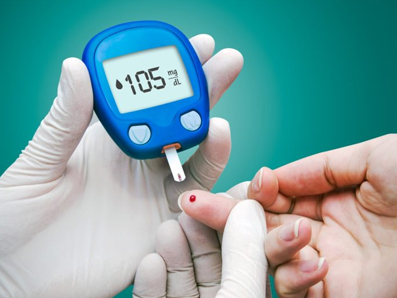
3. Normal Blood Sugar Levels Could Still Be Problematic! |

![]() A new study by researchers at Stanford University in California, published in journal PLOS Biology reveals that "normal" blood glucose levels are often not normal at all--they stray much farther from the healthy ranges than we assumed. Paying closer attention to these spikes could prevent diabetes and some of its complications.
A new study by researchers at Stanford University in California, published in journal PLOS Biology reveals that "normal" blood glucose levels are often not normal at all--they stray much farther from the healthy ranges than we assumed. Paying closer attention to these spikes could prevent diabetes and some of its complications.
![]() None of the common prevalent tests do consider the glucose fluctuations. So, researchers led by Michael Snyder, who is a professor of genetics at Stanford, decided to monitor these daily fluctuations in otherwise healthy individuals.
None of the common prevalent tests do consider the glucose fluctuations. So, researchers led by Michael Snyder, who is a professor of genetics at Stanford, decided to monitor these daily fluctuations in otherwise healthy individuals.
![]() They looked at the patterns of blood sugar change after a meal and examined how these patterns vary between different people who have had the same meal. Prof. Snyder and team used continuous glucose monitors to assess the blood sugar of the participants in their normal environment, together with their whole-body insulin resistance and insulin secretion. The blood sugar and metabolic measurements allowed the researchers to group the participants into three different "glucotypes," based on the patterns of blood sugar variability. People whose blood sugar did not vary much were grouped under "low variability;" those whose blood sugar was found to spike quite often were grouped under "severe variability;" and finally, people who fell in between were classified as the "moderate" glucotype.
They looked at the patterns of blood sugar change after a meal and examined how these patterns vary between different people who have had the same meal. Prof. Snyder and team used continuous glucose monitors to assess the blood sugar of the participants in their normal environment, together with their whole-body insulin resistance and insulin secretion. The blood sugar and metabolic measurements allowed the researchers to group the participants into three different "glucotypes," based on the patterns of blood sugar variability. People whose blood sugar did not vary much were grouped under "low variability;" those whose blood sugar was found to spike quite often were grouped under "severe variability;" and finally, people who fell in between were classified as the "moderate" glucotype.
![]() The findings revealed that "glucose dysregulation, is more prevalent and heterogeneous than previously thought and can affect individuals considered normoglycemic by standard measures."Next, the researchers wanted to see how people of different glucotypes reacted to the same meal. So, they offered all the participants three types of standard breakfasts: cornflakes with milk, bread with peanut butter, and a protein bar. Each participant responded uniquely to these breakfasts, suggesting that people metabolize the same nutrients in an individualized way. Also very common food items like corn created a spike in most participants.
The findings revealed that "glucose dysregulation, is more prevalent and heterogeneous than previously thought and can affect individuals considered normoglycemic by standard measures."Next, the researchers wanted to see how people of different glucotypes reacted to the same meal. So, they offered all the participants three types of standard breakfasts: cornflakes with milk, bread with peanut butter, and a protein bar. Each participant responded uniquely to these breakfasts, suggesting that people metabolize the same nutrients in an individualized way. Also very common food items like corn created a spike in most participants.
![]() "We were very surprised to see blood sugar in the prediabetic and diabetic range in these people so frequently” said Michael Snyder. “The idea is to try to find out what makes someone a 'spiker' and be able to give them actionable advice to shift them into the low glucotype." he added.
"We were very surprised to see blood sugar in the prediabetic and diabetic range in these people so frequently” said Michael Snyder. “The idea is to try to find out what makes someone a 'spiker' and be able to give them actionable advice to shift them into the low glucotype." he added.
For enquiries info@jothydev.net.
Please visit: jothydev.net | research.jothydev.com | diabscreenkerala.net | jothydev.com/newsletter
